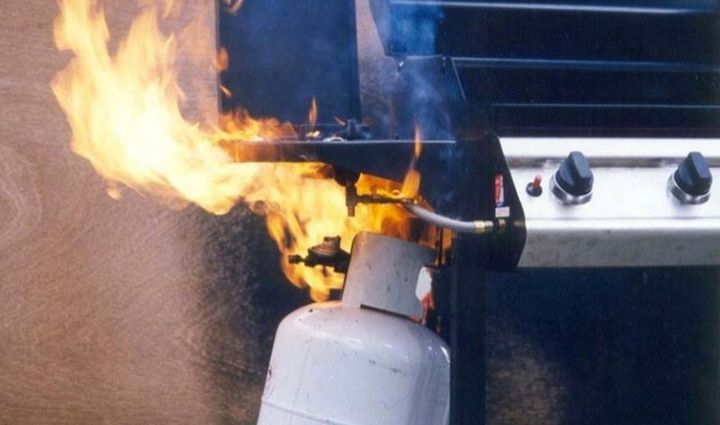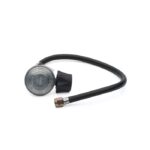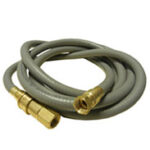Checking your barbecue for gas leaks is easy to do and should be part of your routine maintenance to ensure that your grill is proper working order.
Gas leaks are typically caused by loose connections or damaged gas hoses:
- Connections can become loose over time or may not have been properly fastened to begin with.
- Gas hoses can deteriorate over time and crack or split, or be damaged by animals such as mice or squirrels chewing on them.
It only takes a few minutes to check for a gas leak before firing up your grill. We recommend that you check for leaks each time you connect your regulator or natural gas hose to the barbecue, or after long periods of storage such as in the spring.
When To Check For Gas Leaks
A leak test should be performed when:
- You’re lighting a new grill fro the very first time, especially if you purchased it pre-assembled.
- Every time the propane cylinder is refilled or replaced.
- Every time the gas components are replaced.
- At the start of every season, and once more throughout the season.
- After long periods of storage or non-use.
- If the regulator Flow Limiting Device has been activated.
- If your grill is hard to light or you smell gas.
- If burner performance is irregular or poor.
How To Test For Gas Leaks
Follow these steps to test for a gas leak:
- Make sure your gas supply is turned off and all control knobs are in the OFF position.
- Inspect all hoses on the grill, looking closely for signs of deterioration such as cracking, abrasions, holes, or tears. Ensure all the hoses are tightly connected and that there are no sharp bends or kinks in the gas line.
- Check the gas cylinder for rust, dents, bulges, corrosion, punctures, or other signs of damage.
- Mix a 50/50 solution of water and dish soap and apply it to the gas hose and connections points with a spray bottle or with a clean brush.
- Open the gas supply, but do NOT turn on the control knobs or light the grill. Do not smoke while testing for gas leaks.
- Inspect the hose and connection points. If you see growing bubbles forming at any point this indicates a gas leak.
- Turn off the gas supply.
What To Do If You Find A Leak
If you discover a leak on the gas hose itself, the hose must be replaced before using the grill again – this is a fire hazard.
If you find a leak at either connection point, disconnect the hose and reconnect it, making sure that the fittings are not cross-threaded. The connection between the regulator and propane tank should be tightened by hand, while the connection between the gas hose and the manifold should be tightened using a wrench. Once complete, we recommend conducting the leak test again to ensure that the connections are good.




